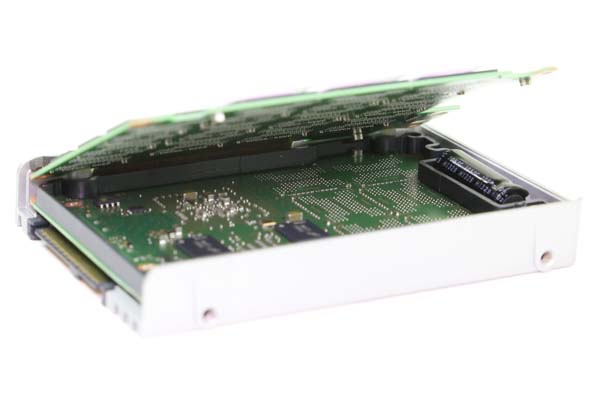Hi all,
we are in the process of ordering a new Supermicro device to host Veeam backup data.
Since we are not familiar with ZFS with this post post we are looking for an advise.
Today we user ReFS on RAID 60 on an HPE Apollo 4200 system that reached the capacity limit.
Our ideal setup is TrueNAS SCALE (for future scale-out needs) hosting Veeam backups written via S3.
Most of the backup jobs are set to run forever forward incremental, some of them with weekly synthetic full (thanks to FastClone support in ReFS).
The hardware configuration is the following:
Supermicro Storage SuperServer SSG-640P-E1CR36L
1x Intel Xeon Gold 6326 Processor 16 Cores (24M Cache, 2.90/3.50 GHz) 185W
8x 32GB 3200MHz DDR4 ECC Registered DIMM Module
2x 480GB Samsung SSD SM883 Mixed Use Data Center SERIES 2.5IN SATA3 (Operating system RAID1)
2x Intel P5520 3.84TB Drive - 2.5 NVMe U.2 PCIe-4.0 Drive (ZIL cache RAID1)
34x 18TB Enterprise Class SAS3 12Gb/s 7200RPM - 3.5" HDD
2x Intel X520-DA2 - 10GbE Dual-Port SFP+ Server Adaptor
We are not looking for the maximum performance, but for a balanced/safe ZFS layout.
1. Looking at our needs Is TrueNAS SCALE a good choice in terms of stability?
2. 4x 8HDD RAIDZ2 + 2HDD as global hotspare disks is really a balanced config?
3. ZIL cache disk built by 2x Intel P5520 3.84TB Drive NVMe drives in RAID1 with VROC will help us?
4. No L2ARC device is configured, the system will rely on ARC with 256GB of ECC RAM, are we going to have a good reading performance?
5. S3 (without erasure coding) works fine with this setup in terms of performance and reliability?
6. There are some tuning rules we should consider for S3 use?
Thank you for your help.
Regards.
Stefano
we are in the process of ordering a new Supermicro device to host Veeam backup data.
Since we are not familiar with ZFS with this post post we are looking for an advise.
Today we user ReFS on RAID 60 on an HPE Apollo 4200 system that reached the capacity limit.
Our ideal setup is TrueNAS SCALE (for future scale-out needs) hosting Veeam backups written via S3.
Most of the backup jobs are set to run forever forward incremental, some of them with weekly synthetic full (thanks to FastClone support in ReFS).
The hardware configuration is the following:
Supermicro Storage SuperServer SSG-640P-E1CR36L
1x Intel Xeon Gold 6326 Processor 16 Cores (24M Cache, 2.90/3.50 GHz) 185W
8x 32GB 3200MHz DDR4 ECC Registered DIMM Module
2x 480GB Samsung SSD SM883 Mixed Use Data Center SERIES 2.5IN SATA3 (Operating system RAID1)
2x Intel P5520 3.84TB Drive - 2.5 NVMe U.2 PCIe-4.0 Drive (ZIL cache RAID1)
34x 18TB Enterprise Class SAS3 12Gb/s 7200RPM - 3.5" HDD
2x Intel X520-DA2 - 10GbE Dual-Port SFP+ Server Adaptor
We are not looking for the maximum performance, but for a balanced/safe ZFS layout.
1. Looking at our needs Is TrueNAS SCALE a good choice in terms of stability?
2. 4x 8HDD RAIDZ2 + 2HDD as global hotspare disks is really a balanced config?
3. ZIL cache disk built by 2x Intel P5520 3.84TB Drive NVMe drives in RAID1 with VROC will help us?
4. No L2ARC device is configured, the system will rely on ARC with 256GB of ECC RAM, are we going to have a good reading performance?
5. S3 (without erasure coding) works fine with this setup in terms of performance and reliability?
6. There are some tuning rules we should consider for S3 use?
Thank you for your help.
Regards.
Stefano


